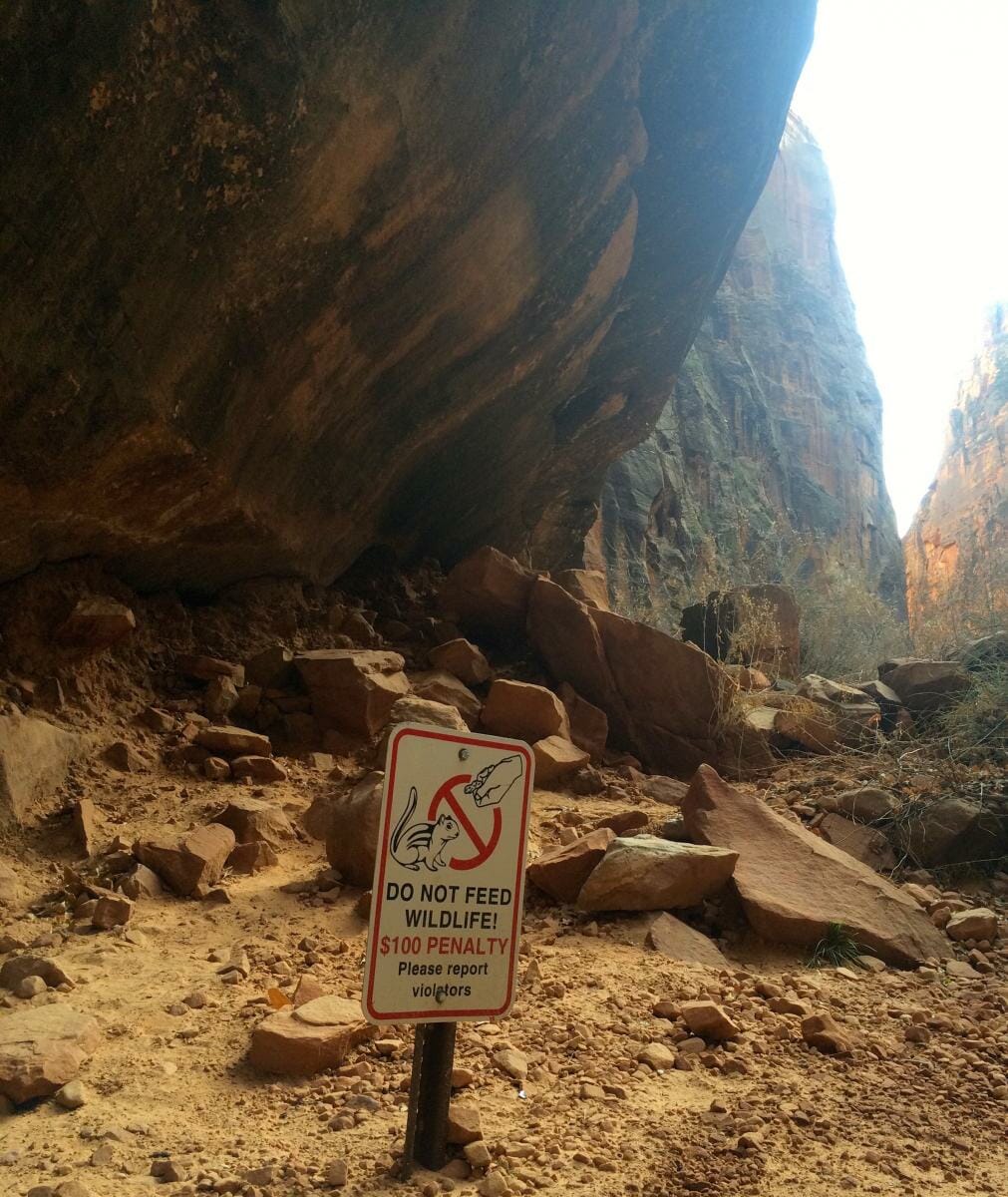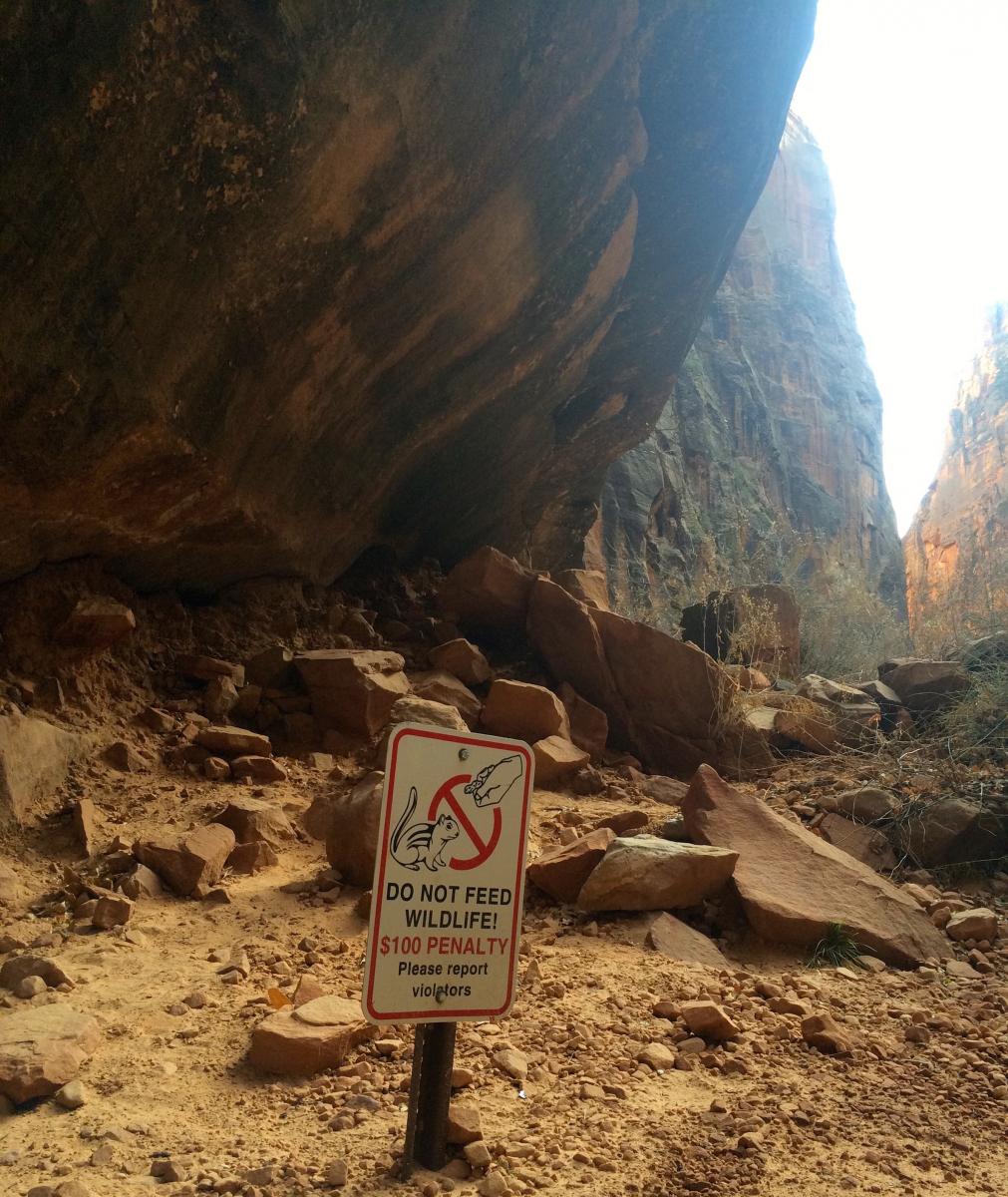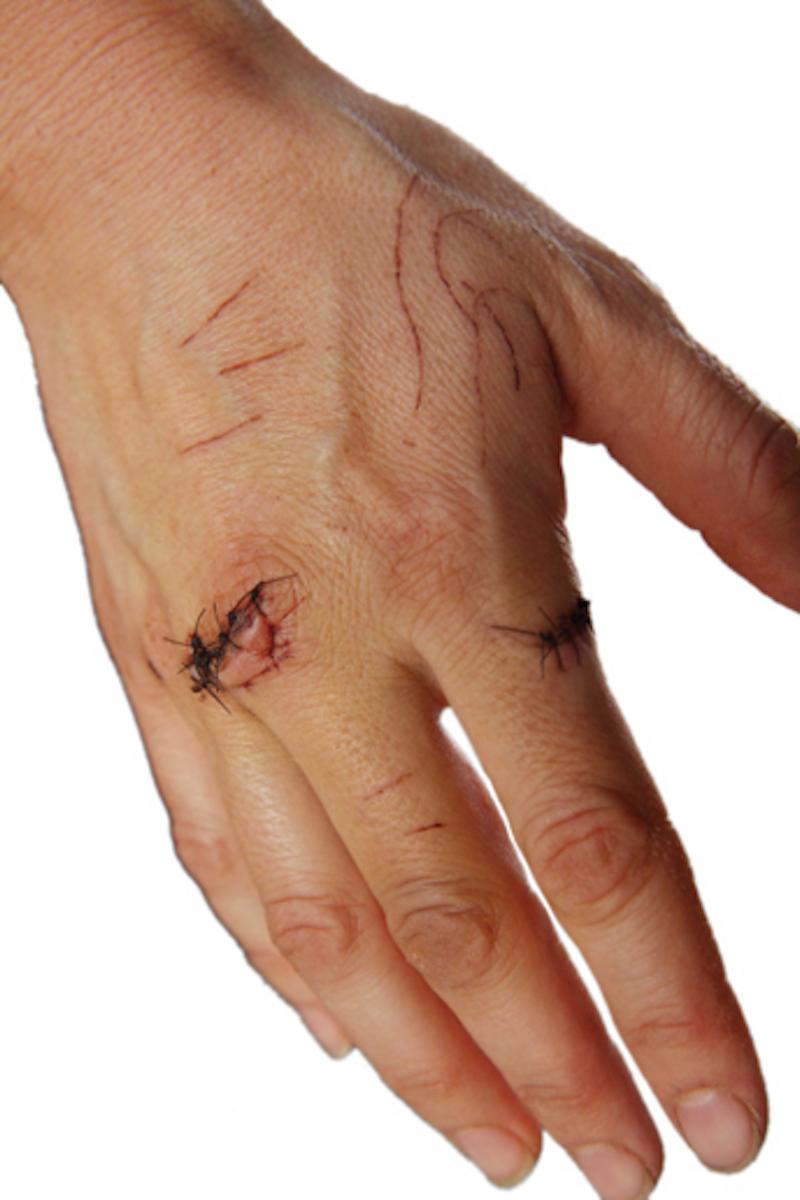News & Updates
Staying a safe distance from wildlife at Zion National Park


Zion National Park, Utah: At Zion National Park 25 feet is the minimum distance recommended for how close people should be to wildlife. Posters on kiosks, signs, along the trail, and park ranger reiterate this recommendation to give wildlife its’ space. Zion teems with wildlife in its beautiful remote, lush, and spectacular valley. The 25-foot minimum recommendation is to ensure that no person is bit or harmed by wildlife. A hike down towards the Narrows exit is a reminder of how attracted wildlife is to humans in search of food.

A do not feed wildlife sign at the entrance to the Narrows.
According to the National Park service, in 2014 over 3 million people visited Zion National Park. It only takes a small number of these visitors to create a big problem for the wildlife in Zion and the other visitors. If an animal is hand fed or is able to obtain food or trash from an unguarded backpack or picnic table, then overtime and repeat attainment they will become attracted to humans in search of food or trash.
Zion recommends not only being 25 feet away at the minimum, but also if an animal notices a person or changes behavior that person is too close. It is the visitor’s responsibility to respond to wildlife behavior and give it space. It is important to remember that people can have an accumulative impact on wildlife. We are all responsible to not add to the impact that humans can have on wildlife. One piece of food given to an animal may seem harmless, but the more opportunities that animal has to obtain more food or trash from visitor to visitor has unfortunate impacts on wildlife.

This picture is from Zion National Park. This picture shows and injury from a ground squirrel.
Wildlife that is attracted to humans in search of food will lead to people getting bit by rodents or bucked and kicked by ungulates. In other areas outside of Zion, bears can be attracted to humans in search of food, which can lead to particularly dangerous interactions. A person being harmed is unfortunate, but the tragic thing can be that ultimately wildlife pay the price. Any kind of wildlife that is potentially dangerous to people will have to be either removed or put down by the land management agency.
A group of kids learning the rule of thumb.
At Leave No Trace we recommend teaching kids the rule of thumb. When they are out on a hike and see wildlife, the rule of thumb insures they are staying a safe distance from the wildlife. For the rule of thumb: stick out your arm all the way straight, put up your thumb, close or cover one eye, look down your arm and see if you can cover the wildlife with your thumb. If you can cover the wildlife fully with your thumb, you are a safe distance. If you cannot cover the wildlife with your thumb, you need to back up and give it more space.
Thanks for reading and remember to be like Bigfoot and keep your food and trash away from wildlife!
Pat and TJ
Leave No Trace’s Patrick and Theresa Beezley are part of the 2015 Subaru/Leave No Trace Traveling Trainer Program that provides free, mobile education to communities across the country. Proud partners of this program include Subaru of America, Coleman, Hi-Cone, and Smartwool.
Let’s protect and enjoy our natural world together
Get the latest in Leave No Trace eNews in your inbox so you can stay informed and involved.
